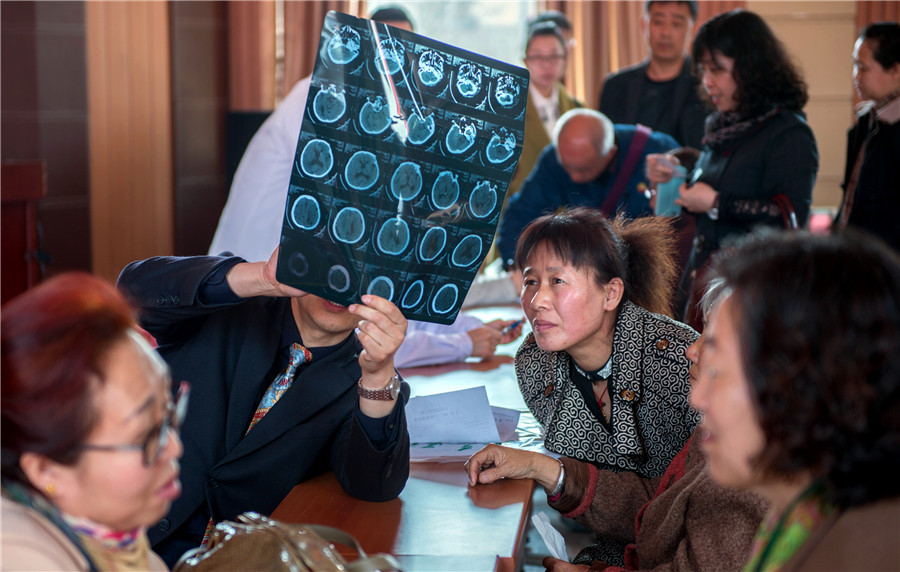Familial link for Parkinson's disease discovered
By Nora Zheng | China Daily | Updated: 2019-05-27 09:06

Sleep cycles
People with RBD experience symptoms after a period of deep sleep when the eyes flutter rapidly, which is known as rapid eye movement, or REM, sleep.
Normally, humans cycle between non-REM sleep and REM sleep. A cycle normally lasts around 90 minutes for adults, and as the sleep cycles progress, the period of non-REM sleep lasts longer.
During non-REM sleep, little or no eye movement occurs, brain activity is relatively slow, breathing is regular, the heart rate is slow and blood pressure is low.
Both the brain and body are at rest. People rarely dream during non-REM sleep.
However, during REM sleep, the eyes move back and forth rapidly behind the eyelids, and although the body remains at rest, the brain is active. Recordings of electrical activity in the brain are similar to those taken during the waking state.
Dreams usually occur during REM sleep, a state normally characterized by muscle atonia, or paralysis. In such a state, if someone dreams they are being chased by a monster and tries their best to run away, he or she does not actually move. The state serves to protect the sleeping person.
That isn't the case for people with RBD. They don't have the protection of muscle atonia during REM sleep, so they act out their violent impulses in the dream state. This "dream enactment behavior" is characterized by excessive motor activity, ranging from simple limb twitches to violent, complex movements that may result in injury to the patients or their partners.
Abnormal buildup
In recent years, Wong Li noticed that his mother's hands and lips had started to tremble. This year, Lok was diagnosed with Parkinson's disease.
Joyce Siu Ping-lam, clinical assistant professor (honorary) at CUHK's Department of Psychiatry, said about 90 percent of patients with idiopathic - that is, resulting from an unknown cause - RBD may eventually develop other neurodegenerative diseases, especially a group known as alpha-synucleinopathies, which includes Parkinson's disease. This vulnerability can last from several years to decades.
These neurodegenerative diseases are characterized by the abnormal buildup of a protein called alpha-synuclein in neurons.
This can directly cause the death of cells in the midbrain that are associated with motor control, as evidenced early in the progression of Parkinson's disease, where the most obvious signs are shaking, rigidity, slowness of movement and difficulty in walking.
Vincent Mok Chung-tong, a professor at CUHK's Department of Medicine and Therapeutics, said research conducted over 20 years shows that Parkinson's disease is a slowly progressing degenerative disorder.
Problems first occur in the spinal cord, before moving slowly up to the midbrain.
However, before reaching the midbrain and causing Parkinson's disease and related symptoms, the condition triggers the loss of muscle atonia during REM sleep, which is a clinical symptom of RBD and indicates that the condition may be a precursor to Parkinson's disease.
Mok said their study of RBD is significant in ongoing research into neurodegenerative diseases. Most neuroprotective trials for neurodegenerative disorders have failed, because once patients start to develop symptoms, it's already too late for clinical intervention. There is a period of five to 15 years preceding the full onset of Parkinson's, so RBD potentially opens a window that will allow early assessment, intervention and additional studies to protect affected neurons.
























